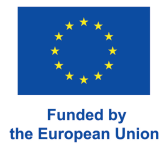By Aliisa Råmark
Last week, our MEMORISE consortium, inspired by Chris Hall’s initiative, gathered at the Bergen-Belsen Memorial for an intensive series of collaborative workshops. The primary goal? To strengthen our collective efforts across various projects: user studies, comparative readers, development of current state models, and planning the next MEMORISE exhibition. It also provided a great opportunity for those who had not yet visited the Bergen-Belsen memorial site to experience it firsthand.
Day 1: Setting the Stage for Collaboration
Sunday
Our first day began with introductions and sharing hopes for the workshops. Tobias Ebbrecht-Hartmann and Noga Stiassny from HUJI provided insights into their recent user studies conducted online and at the Memorial Museum Kamp Westerbork. They discussed the importance of physical models as witness testimonies, proposing an exciting idea: transforming these physical models into interactive 3D digital models. We brainstormed how to explore the existing physical model at the Bergen-Belsen Memorial digitally.

Jakob Kusnick from SDU then led a session on visual storytelling, sparking discussions on how the InTavia platform could be used to tell various narratives, ranging from friendships to football and birdwatching. We debated how to visually present narratives and spatial data of HNP, considering ways to depict the overcrowding and deteriorating conditions of the camps visually, and whether to use intentional UI ‘flaws’ as discomfort brakes to provoke reflection.
In the afternoon, Tobias, Karen Szczepanski, and Noga from HUJI presented the MEMORISE social media concept. They showcased current SoMe practices within the topic of HNP and potential storylines, such as friendships and love during Nazi persecution, focusing on reaching younger audiences with empathetic storytelling. The first days’ discussions set a positive tone for our workshop series.
Day 2: Bridging the Past and Future
Monday
Our second day commenced with a hybrid consortium meeting, providing updates from each work package and reflecting on the progress since our last meeting in February. We then shifted to a hybrid meeting on the distant learning platform, presented by Paul Sommersguter and Linda Reiter from Fluxguide. They introduced the concept of person-based and topic-based exploration on the learning platform in an interactive fashion specifically tailored for school settings. Hence, teachers and pupils are supported in accessing Holocaust-related topics in a guided manner. During this part, we had an interesting and important discussion of the approach of the tool: Is a straightforward (but potentially limiting) approach or a non-linear (but maybe more complex) approach to be preferred?
In the afternoon, Richard Khulusi (Bergen-Belsen Memorial) and Camilla Vang Østergaard (SDU) discussed their progress on the Comparative Document Reader. This included a short presentation of the current state of the tool, its functionality, and its limitations. This introduction prepared the participants for Tuesday’s hands-on session.

Meanwhile, Aliisa Råmark and Héctor López-Carral from Radboud University met with Marc Ellinghaus from Bergen-Belsen Memorial. They toured the memorial site, tested the current Future Memory iPad application, and documented significant archaeological excavations and memorial monuments.

Afterward, the whole group joined an extended tour led by Stephanie Billib from the Bergen-Belsen Memorial.

We deliberated on what elements to visualize in 3D for the current state model and how to integrate additional data, emphasizing the inclusion of individual memory stones to explore personal stories. Perhaps 3D documented memory stones could be linked to diaries or photos when these are available? Could we also provide translations to texts digitally?

The day concluded with stimulating discussions over dinner.
Day 3: Upcoming Exhibition
Tuesday
The third workshop day started with a brainstorming session focused on the goals for the current state model. We emphasized the model’s role in adding context to the memorial culture, developments, and contested narratives, aiming to spark curiosity about the broader history of Nazi persecution. Héctor presented the latest developments of the current-state model from WP4, followed by a discussion on improving the workflow for modeling and ideas for collaboration within the consortium.
Richard and Camilla continued with a hands-on session and received feedback on the Comparative Document Reader. For this, the workshop participants got first-hand access to the first online hosted iteration of the tool in which they took on the role of a user with individual tasks and desires and tested the tool on its intuitivity, scope, usability, and robustness. Meanwhile, Aliisa and Héctor documented archaeological sites and filmed 360-degree videos for later modeling and a potential virtual tour of the site.

After lunch, we brainstormed for the upcoming MEMORISE exhibition in November, discussing the use of designated space and content. Ideas included large display screens and static tablets showcasing the current model, possibly augmenting physical models and maps with digital information. Chris Hall (SDU) even tested a lidar scan of a physical model using an iPad.
Conclusion: Continued Collaboration
Our time together at the Bergen-Belsen Memorial was both inspiring and productive. The workshops fostered new ideas and strengthened our collaborative spirit. Experiencing the memorial site in person inspired us to find new ways to add depth and context to the MEMORISE project, ensuring that we honor history and memories while using technology to engage future generations.
Parts of this post were created with the help of AI-based text generators and grammar tools. All texts were thoroughly fact-checked and carefully edited. Any errors or mistakes are the responsibility of the human authors.



No responses yet